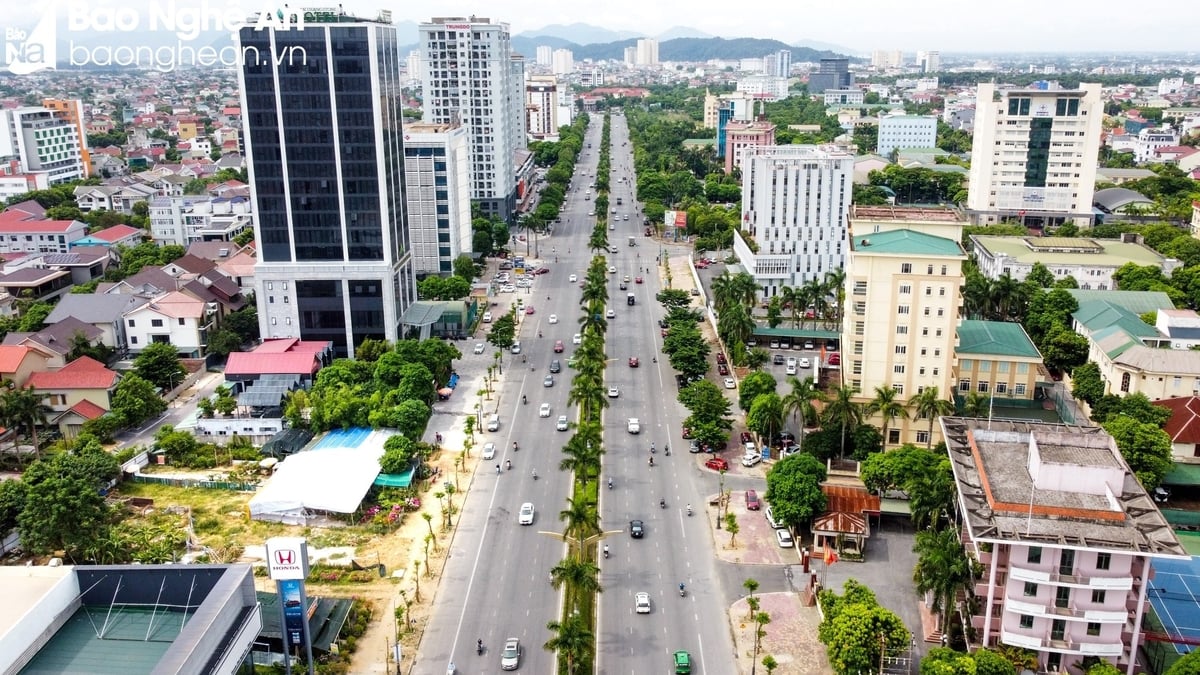3 scenarios with 3 design logics
“Our goal is to find a way to answer the question of how much Vietnam needs to grow to reach high-income status by 2045.”
 |
| Professor, Dr. Tran Thi Van Hoa, representing the research group of the School of Economics and Public Management (National Economics University) at the Policy Dialogue |
Professor, Dr. Tran Thi Van Hoa, representing the research team of the School of Economics and Public Management (National Economics University) attracted the attention of research experts, policy makers... when presenting 3 growth scenarios for Vietnam until 2045.
This answer is certainly not easy, when looking at the target numbers that the economy is aiming for. That is, to bring the current per capita income (GNI) of 4,180 USD (in 2024) to 7,500 USD in 2030 and above about 13,000 - 15,000 USD in 2045. The problem is getting more difficult when the global economic context is increasingly complex and difficult to predict. Along with that, Vietnam is in a period of comprehensive restructuring, with very strong changes.
The first scenario - scenario A, according to Professor Van Hoa, has the design logic of "strong start - solid consolidation and stability maintenance".
In this scenario, phase 1 is expected to be from 2025 to 2029, with a growth rate of 11% per year. Phase 2 lasts for 8 years, from 2030 to 2037, with a growth rate of 9% per year. Phase 3 is also 8 years, from 2038 to 2045, with a GDP growth rate of about 7-8% per year.
“In this scenario with the fast-startup model, we will take advantage of the initial momentum to grow very quickly. However, along with that, the pressure will be very high in the early stages, easily leading to exhaustion due to having to do a lot of work in the same short time,” Ms. Hoa analyzed.
The second scenario - scenario B - is set by the research team as a prolonged acceleration model, with the design logic being "maintaining the peak - soft landing". The duration of the 3 phases in this scenario is 7 years, in which the first 7 years must reach 11%/year, the next 7 years have a GDP growth rate of 8.5-9%/year, and the last 7 years is 6.5-7.5%/year.
The advantage of this scenario, according to Prof. Dr. Van Hoa, is the long preparation time and evenly distributed pressure. However, the risk is determined to be that it is difficult to maintain growth momentum for a very long time, up to 7 years.
The third scenario - scenario C, is called the growth wave model, with the principle of "deep preparation, focused acceleration and efficient optimization".
In this model, period 1 is 10 years, from 2025-2035, in which from now to 2030 is identified as the preparation period, with a GDP growth rate of about 8-10%/year. The period 2031-2035 is identified as the acceleration period, with a growth rate that can reach 11-12%/year. In the next 10 years, the growth rate will gradually decrease, from about 8-9% in the first 5 years and 6.5-7.5% in the last 5 years.
“Growth pressure will increase gradually and will also decrease gradually following the growth wave. Having a long preparation time is also a solution to ensure a solid foundation for the acceleration phase, in line with the natural development cycle. At that time, the risk of growth shocks will decrease,” Ms. Van Hoa clarified.
Proposal to choose the "growth wave" model
At the policy dialogue "Orientation and solutions for high and sustainable economic growth until 2045" recently organized by the National Economics University in collaboration with the Central Policy and Strategy Committee, Prof. Dr. Van Hoa proposed the third scenario, according to the growth wave model.
 |
| Comparison of 3 growth scenarios of the School of Economics and Public Management Research Group |
In theory, this model is consistent with empirical evidence from East Asia. Second, the preparation period is long, ensuring a comprehensive reform as well as flexibility in implementation options. Similarly, implementation resources will also increase gradually according to capacity…
“The country is in the process of restructuring its institutions and state management apparatus, so it will be difficult to accelerate immediately. Similarly, infrastructure investment efforts will be the foundation for higher growth plans in the coming period. That is why we propose this scenario. Moreover, the proposal to split the 2025-2035 period into two five-year periods allows for flexibility in implementation. If the expected growth rate is not achieved in the first five years, it will accelerate in the following five years, avoiding imbalances and growth shocks,” Prof. Dr. Van Hoa analyzed.
In the selected scenario, the research team calculated that GDP could reach its highest level in the 2031-2035 period, at about 11-12%/year.
The growth driver is the effective exploitation of the invested infrastructure system, from operations to logistics optimization. The boom in high-tech industry is also forecast to contribute significantly to growth, as all business sectors accelerate, the localization rate can reach 40-50%. In particular, the digital economy will contribute 20-25% of GDP when the comprehensive digital transformation strategy has shown results. Along with that, high-quality human resources develop...
However, Ms. Hoa also emphasized that the strategic preparation period, in the 5 years from now until 2030, is of great significance for the acceleration. The growth target for these 5 years will be 8-10%, with the driving force of perfecting institutions, developing infrastructure, creating momentum for the private economic sector and attracting quality FDI capital flows.
Importantly, institutional, governance and legal reforms in this period create the foundation for the next stage of shifting from capital-based growth to productivity-based growth, strongly and completely shifting to development based on a knowledge economy, deeply participating in the global value chain. At that time, the economy will step up to higher levels, have better added value in the value chain and develop more sustainably. The country's position in 2045 will be high income, becoming the center of innovation in Southeast Asia...
“Currently, we have the key conditions for success, which are political determination and consensus of the people and businesses in implementing the country's high growth targets. Strategic breakthroughs in terms of institutions, infrastructure, and human resources are also being promoted with breakthrough thinking. The next step to be taken is detailed and specific implementation solutions based on identifying development priorities.
In particular, the research team also proposed a monitoring and evaluation mechanism every three years to comprehensively review and identify emerging bottlenecks, thereby providing early warnings. If the actual growth rate is lower than the target of 2%, backup plans should be activated. Conversely, if there is an opportunity for a stronger breakthrough, adjustments can be made to take advantage of the opportunity.
According to Prof. Dr. Van Hoa, an economy that has never achieved double-digit growth and is still relying on the main growth drivers of capital and labor, it is extremely necessary to identify scenarios to clearly see the path to take, the challenges to face and the opportunities ahead. This is what the research team conveys in their analytical models.
Source: https://baodautu.vn/ba-kich-ban-tang-truong-de-viet-nam-gia-nhap-nhom-quoc-gia-tang-truong-cao-nam-2045-d298158.html



































































































Comment (0)